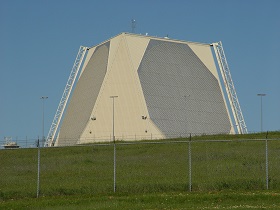On January 12, 2017, in Moscow Russia’s and China’s representatives agreed to take joint measures against the US missile-defense system in South Korea. Vasily Kashin shares what missile-defense system deployment on the Korean peninsula would mean for regional security and what countermeasures Moscow and Beijing may take.
On January 12, 2017, in Moscow Russia’s and China’s representatives agreed to take joint measures against the US missile-defense system in South Korea. Vasily Kashin shares what missile-defense system deployment on the Korean peninsula would mean for regional security and what countermeasures Moscow and Beijing may take.
At this point Russia-China agreement on joint measures to establish their strategic interests and balance of power in the region, signed in a response to future deployment of the US missile defense system THAAD in South Korea should rather be viewed as a step to increase political pressure on Seoul. Evidently, it is too early to speak about parties’ readiness to take immediate military action.
The decision to deploy a THAAD battery in South Korea was made in summer of 2016, with the process of deployment to be finished by the end of 2017. The deep political crisis breaking out in South Korea in October, 2016 and the initiated impeachment of President Park Geun-hye have challenged the agreement’s fate. Against this background China has increased political and economic pressure on South Korea aiming to secure major changes in the US-South Korea THAAD agreement, if not its full repeal.
Since the very beginning the agreement has been quite controversial from the South Korea’s interests’ standpoint. American THAAD is hardly capable of ensuring the defense of the most important objects and populated areas on Korean territory. Aiming to protect an extremely expensive object from a possible North Korean long-range artillery attack, multiple rocket launcher systems and many shorter-range rockets, it was decided to deploy THAAD at a considerable distance from demilitarized zone. As a result, according to some articles, the complex may not be able to ensure security of Seoul agglomeration which encompasses up to 50% of South Korean population. Moreover, North Korean military capabilities are too diverse for one THAAD battery to seriously alter the situation.
Complex deployment has resulted in steep deterioration in South Korea’s relations with China, which is not only the most powerful country in the region, but Korea’s key economic partner. In Chinese’ view, being part of long-range early warning radar, AN/TPY2 might be efficient to fix Chinese ballistic intermediate-range missiles deployed in Northeast China. One should especially note that even though the US agreed to sell THAAD to the United Arab Emirates and Qatar, the system deployed in Korea will be owned by the US army. Consequently, it may be involved in possible China-US conflicts unrelated to the Korean peninsula.
Complex deployment may have been exercised under a lot of pressure from the US. The measure is criticized by a number of prominent Korean opposition politicians who may as well come to power in the foreseeable future thanks to the political crisis. A perfect time to increase the pressure on Seoul. Such pressure on China’s behalf sometimes becomes substantial and includes among other things extraordinary fiscal, sanitary and other inspections at numerous Korean factories in China.
China’s goal at this point is to repeal THAAD deployment as maximum or to postpone its realization, introduce additional conditions and exclude the possibility of further missile defense system strengthening as minimum.
Contrary to China’s, Russia’s strategic nuclear potential does not suffer directly from missile defense complex in Korea. Russia’s ICBM and SSBN bases are located far from Korea, and Russia does not produce intermediate-range ballistic missiles THAAD complex is designed to fight. However, Russia opposes the US missile defense systems approaching its borders and shares China’s standpoint.
Russia-China military response to THAAD, should it happen, depends on Beijing’s and Moscow’s pressure campaign on Seoul that is to be held in the upcoming months. In 2016, Russia and China held their first joint military exercise (computer simulation) of missile defense system in theater of operations. As it was announced later, the exercise is to be repeated in 2017. Consequently, the obvious response could be Russia-China relations in missile defense becoming more active with transition from theater missile defense to strategic one. In any case, the US missile defense object on South Korean territory transforms the Republic of Korea into a hostage of any military crisis between China and the US, even if its roots are thousands of miles away from the Korean peninsula.






